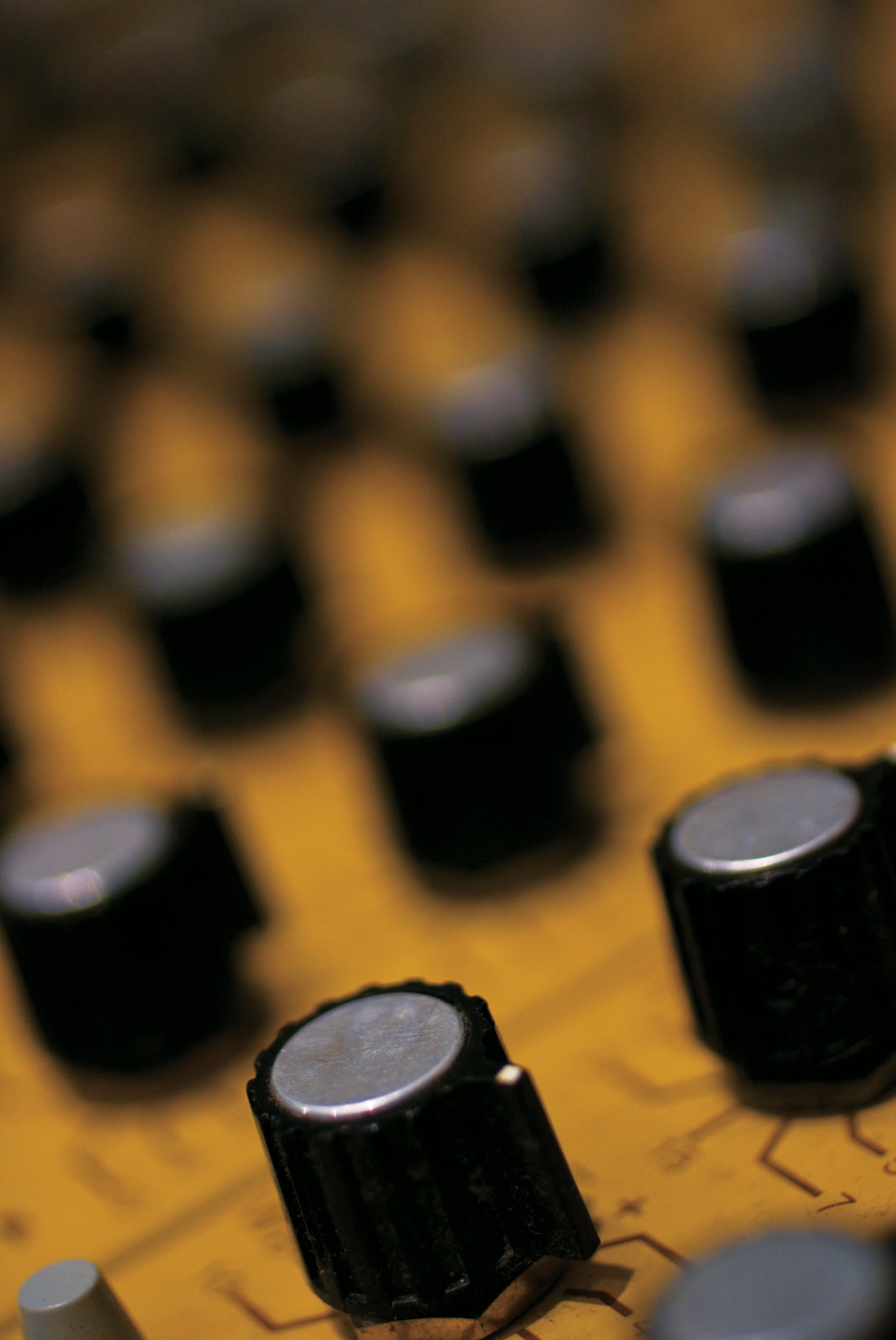The SE2200A large-diaphragm condenser (Tape Op #48) is one of my favorite mics. At $300 street, it's easily one of the best deals in pro audio. Up until recently, I also had in my cabinet a matched pair of SE3 cardioid mics, which SE Electronics marketed as small-diaphragm condensers with Class A FET electronics. Personally, I would call the SE3 a medium-diaphragm condenser, as its capsule is 3/4" in diameter, and the mic is actually quite a bit more massive than the typical pencil condenser. The SE3, like many modern condenser mics, has a decent bit of high-end lift, peaking a few dB above zero in the 8-12 kHz range. Some of Tape Op's contributing writers at WMBR Radio, who had these mics for a few months, felt that "instruments with lots of high-end (violin in particular) were made unpleasantly screechy," and "as general-use small-diaphragm condensers they weren't that versatile, but the high-end bump could be useful in poking through dense mixes." But my initial experiences in my own studio were very different. Instead, I found the high-end lift useful, and in most cases, very smooth, adding detail without being edgy; although one shoulder of the peak sits right where sibilance can get nastiest (around 7 kHz), most of the SE3's high-end presence is in the airier band just above. Only when placing the mic too close to a source did I experience overabundant sibilance, which explains how the engineers at WMBR, who do mostly single-room, live recording of bands, close mic'ing as much as possible to reduce bleed, were let down by the SE3. Moreover, I felt that the midrange was presented in a well-balanced manner by the SE3, without being too forward or getting lost underneath the highs-perfect for medium-distance acoustic guitar work-but the midrange would quickly get soupy at very close mic'ing distances. One other statement of note from the engineers at WMBR-the SE3 had to be aimed carefully or its high-frequency response would be unpredictable, as its pickup pattern was particularly tight near its high-frequency presence peak-not an issue if you're using it on a guitar amp but problematic on a dancing acoustic guitarist or if trying to use it too closely to a moving cymbal. But such are the woes of using a cardioid-only mic; fixed pickup pattern and voicing to a particular distance are inherent to the category. All this is an explanation as to why I wished the otherwise excellent SE3
had selectable pickup patterns. Well, my wish came true. The new SE4 is basically a re-
engineered SE3 with interchangeable capsules. When employing the standard cardioid capsule, it sounds exactly the same as the SE3, which makes the SE4 a great mic to begin with-same airy highs while retaining the same balanced manner. But where the SE3 failed, the optional capsules for the SE4 come to the rescue. For mic'ing at very close distances, the omnidirectional capsule is just wonderful. I'm thinking it was designed particularly for close-mic'ing because it's not truly omni (as my Earthworks omnis are). Not only does it exhibit proximity response-the lows ramp up in a very smooth and controllable way-but there's a noticeable change in the highs as you turn the mic relative to the source. The omni-equipped SE4 sounds great on snare shell (1" away) and acoustic guitar (12" out). It also works well as a room mic when positioned close to and pointing at the body of the piano in my live room. The hypercardioid capsule has a much more predictable pickup pattern than the cardioid, with great rejection even in the lower-mids at 135 and 225 degrees. More importantly, the highs don't seem to roll off as unevenly as they do with the cardioid capsule when the source moves off-axis. Furthermore, the hypercardioid capsule exhibits a dip in
frequency response in the 7 kHz zone where sibilance wreaks the most havoc, but there's still some airy lift above 10 kHz. I was rewarded with terrific reproductions of vocals, violin, top head of the snare, cymbals, piano, acoustic guitar, and even kick drum, while the precise and predictable pickup pattern was beneficial in controlling bleed.
As with the SE3 that it replaces, the SE4 can be purchased singularly or as part of a matched pair. The matched pair comes in a rather large and beefy flightcase lined with high-density foam with cutouts for the mics (with the standard cardioid capsules attached) and included shockmounts and stereo bar (with adjustable spacing). There are also four cutouts for the optional capsules. The capsules are available either as a set of single omni and hypercardioid capsules (one of each) or as a set of matched pairs (four capsules total). Curiously, these come in a beautiful wooden box. An added bonus is that the manufacturing quality of the accessories seems improved; the SE4 shockmounts, for example, are more refined in fit and finish than the SE3 shockmounts from two years back. My only wish now is for SE Electronics to manufacturer a side-address, figure-8 capsule for the SE4. (SE4 $349 street, SE4 pair $699, capsule kit $349, stereo capsule kit $699; www.seelectronics.com)
Tape Op is a bi-monthly magazine devoted to the art of record making.




_disp_horizontal_bw.jpg)